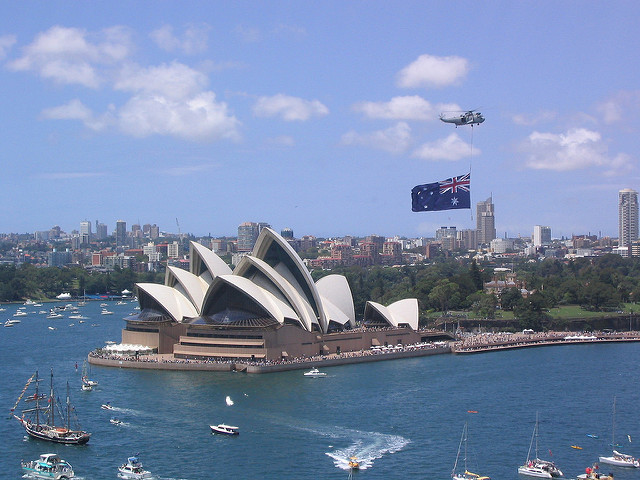 The Australian newspaper has lately been running an editorial line (paywalled) about moves within the Department of Defence to increase diversity within the department, and especially within the ADF. Under the subtitle ‘Security must not play second fiddle to cultural change’, the paper essentially argues that political correctness is eroding the ability of the ADF to fulfill its core missions, with a swipe at the Collins-class submarine fleet along the way.
The Australian newspaper has lately been running an editorial line (paywalled) about moves within the Department of Defence to increase diversity within the department, and especially within the ADF. Under the subtitle ‘Security must not play second fiddle to cultural change’, the paper essentially argues that political correctness is eroding the ability of the ADF to fulfill its core missions, with a swipe at the Collins-class submarine fleet along the way.
To their credit, the service chiefs responded with a letter—which The Australian selectively edited—that eloquently defended a policy of inclusiveness in the ADF. Among other things, the Chiefs pointed out a real duty of care issue:
‘Over the last few years the Australian Defence Force has made significant change across a very wide range of cultural issues. The gut wrenching stories of former and serving members of the Australian Defence Force through the work of the Defence Abuse Response Task Force were born out of one simple thing – a culture of exclusion.
The only way to ensure that these types of events cannot systemically take hold again is to ensure that we have a culture of inclusion. A culture that ensures the needs of various groups within our workforce can be accommodated so they can perform at their best.’
They also point out that their focus is on providing the government with mission-ready options (as it should be):
‘What matters is that we have a cohesive team that is committed to the task at hand—delivering options to the Government of the day, every day.’
Subsequently, The Oz has seen fit to publish a string of essentially similar letters (here and here)—all, not coincidentally, from men with Anglo-Celtic sounding names—that strongly agree with the paper’s view.
Our first instinct was to ignore this issue. But then we recalled General David Morrison’s observation that ‘the standard you walk past is the standard you accept.’ Well, we don’t accept the standard being promulgated in the pages of The Australian. On the contrary, we think that Defence is doing the right thing. And we think that a military that predominantly consists of members drawn only from a fraction of the population, as the ADF typically did for much of its history, is a bad thing.
The archetypical image of a ‘digger’ is a male of Anglo-Celtic descent (notwithstanding that the ADF has always had people from diverse backgrounds). Today that group represents just 33% of today’s population (PDF, Table 141). The ADF can’t afford to ignore the remaining two-thirds of the population. To do so would risk it becoming unrepresentative of the people it exists to protect.
The only justification for skewing the demographics of the defence force would be if its mission required a particular subset of the population. But, to the contrary, modern military operations often take place within local populations, where language skills and cultural knowledge are essential to success. Moreover, because the ADF is becoming more high-tech, it needs to recruit the best and brightest people it can get—irrespective of race, gender, religion or sexual orientation.
As the Australian population becomes more diverse, any attempt to keep the ADF as a demographic heritage theme park would be as counterproductive as it would be discriminatory. The Chiefs are on the right track, and The Australian is on the wrong side of history.
Oh, and The Oz has consistently got it wrong about the ‘ailing’ Collins submarine fleet in the past few months. Progress in maintenance management since the Coles Review—which, incidentally, pointed out that there was no technical reason not to extend the life of the Collins boats—shows a system that’s finally getting it right.
Footnote
- The 33% figure is arrived at by adding the entries for English, Australian, Irish, Scottish and Welsh. The quoted figure probably overestimates the actual proportion, due to the inclusion of the ‘Australian’ category.

